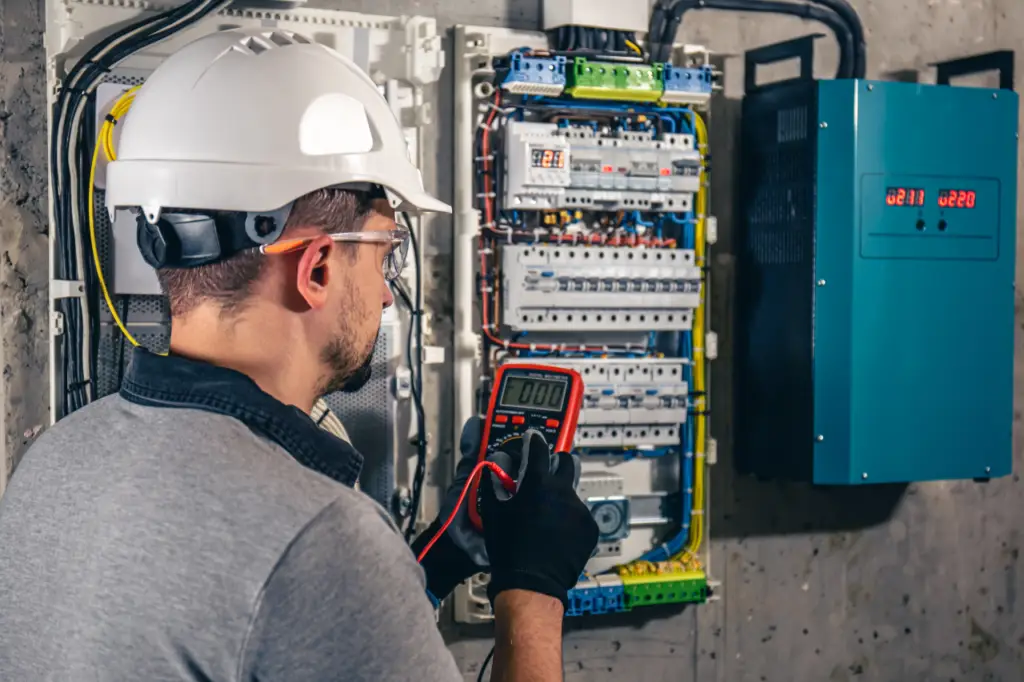
What is Voltage and Current Analysis? And Why is it Important?
Voltage and current analysis is the process of evaluating electrical circuits to measure and monitor the flow of electricity within a system. It helps identify irregularities, optimize performance, and ensure that electrical systems operate efficiently and safely.
Why is it Important?
Voltage and Current Analysis provides critical insight into your electrical system’s performance, helping identify inefficiencies and prevent equipment failures before they happen.
- Prevent Downtime: Detects power anomalies like voltage drops, current imbalances, and harmonics that can lead to unexpected shutdowns.
- Early Detection: Uncovers abnormal load conditions and power quality issues affecting sensitive equipment.
- Safety & Compliance: Supports compliance with NFPA 70B and IEEE standards by ensuring your system operates within safe electrical limits.
- Optimize Efficiency: Improves energy usage, reduces equipment stress, and extends the lifespan of electrical infrastructure.
- Maintain Operations: Conducted under normal operating conditions—no need to power down your system during testing.
Is Voltage and Current analysis Right for Your System?
Voltage and Current Analysis is a powerful tool for identifying hidden inefficiencies and electrical issues that could compromise system performance. It’s not just about measuring power—it’s about understanding how your system behaves under real operating conditions.
This method is best for detecting power quality issues like harmonics, voltage drops, and load imbalances. It provides valuable insight into your electrical system’s efficiency and stability, helping you make informed decisions for maintenance and upgrades.
Primary Function
Monitors electrical loads and power quality
Best for Detecting
Power fluctuations, harmonics, load imbalances
Detection Range
Measures voltage, current flow, and system efficiency
Environmental Impact
Requires live monitoring for accurate analysis
Equipment Required
Power meters, oscilloscopes
Limitations
Cannot detect physical defects or insulation wear
Compare Voltage and Current Analysis with other electrical Predictive Maintenance methods
How Does Voltage and Current Analysis Work?
Voltage and current analysis involves using specialized tools and techniques to measure electrical flow across circuits. The process typically includes:
Data Collection
Technicians use meters, oscilloscopes, or power analyzers to measure real-time voltage and current.
Load Monitoring
Examining power consumption patterns to detect overloads or inefficiencies.
Waveform Analysis
Evaluating electrical waveforms to identify distortions, harmonics, or fluctuations.
Fault Detection
Locating faults such as short circuits, open circuits, and excessive voltage drops.
Optimization Recommendations
Based on findings, adjustments are made to improve power quality and system reliability.
Common Electrical Issues Identified Through Voltage and Current Analysis
Voltage Drops
When voltage levels fall below required thresholds, causing inefficient operation of equipment.
Power Surges & Sags
Sudden spikes or dips in voltage that can damage sensitive electronics.
Overloading & Overcurrent
Excessive power consumption leading to overheating and equipment failure.
Harmonics & Power Factor Issues
Electrical distortions affecting performance and efficiency.
Short Circuits & Ground Faults
Critical faults that can lead to fires or system breakdowns if left unchecked.
Key Methods Used in Voltage and Current Analysis
Power Quality Analysis
Identifies and mitigates power distortions such as harmonics and transients.
Load Flow Studies
Determines voltage levels, power losses, and optimal load distribution.
Voltage Drop Analysis
Ensures proper voltage levels are maintained to prevent inefficiencies.
Compliance & Safety Standards for Voltage and Current Analysis
To ensure safe and efficient electrical operations, voltage and current analysis must comply with key industry standards:
NFPA 70E
Workplace electrical safety standards for arc flash protection.
OSHA Regulations
Workplace safety requirements for handling electrical hazards.
Adhering to these standards helps prevent electrical accidents, ensures system reliability, and maintains compliance with industry regulations.
